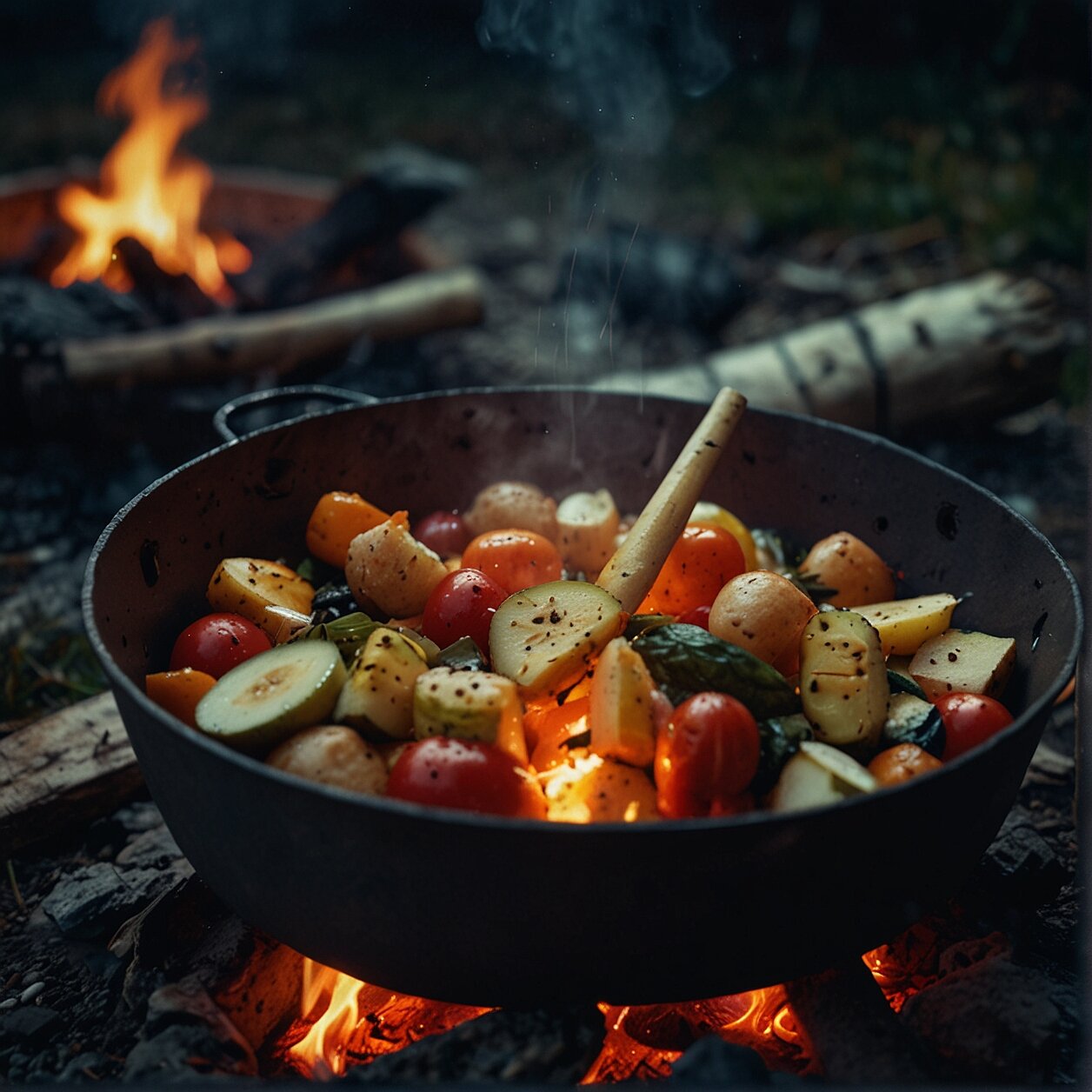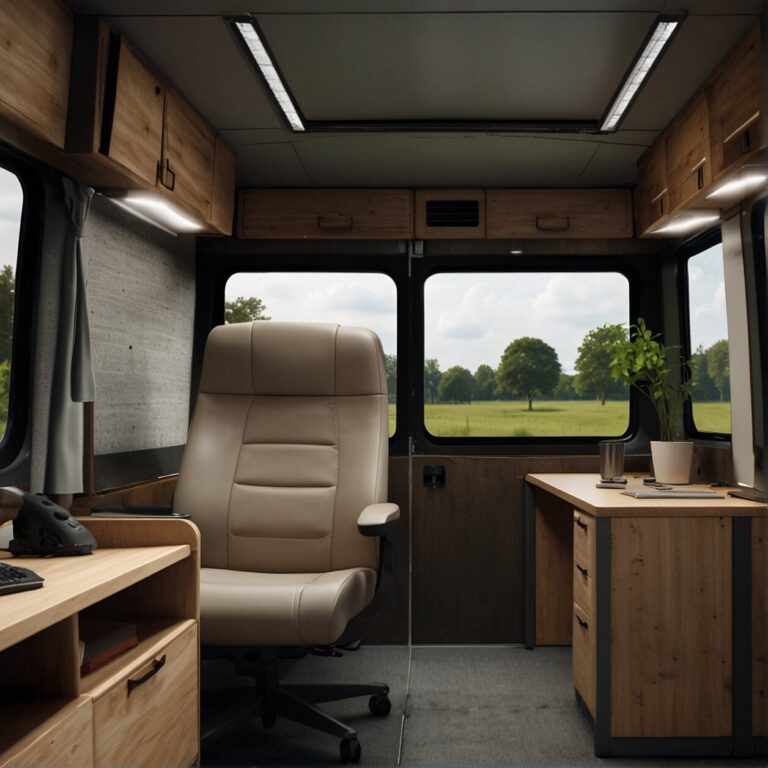Backpacking Cuisine: Nutritious and Easy-to-Cook Meals for the Trail
Welcome, adventurers and culinary enthusiasts alike! Just because you’re miles from your home kitchen doesn’t mean you have to forsake the pleasure of a nutritious and tasty meal.
Imagine eating a hot, balanced dish under the stars after a grueling day on the trail. Sound impossible? It’s time we show you that it’s far from it. This guide will walk you through everything you need to know about creating easy, hearty, and nourishing meals that will help fuel your backpacking adventures.
“Great nutrition is absolutely key to not only surviving but thriving on a backpacking journey.”
We’ve cooked up this nutritional guide just for you, with insider tips, tricks, and techniques to keep you well-fed on the trail. So, whether you’re a seasoned backpacker or a hiking novice, get ready to learn how to take your trail-side dining to the next level.
So, grab your backpack and your appetite- your next adventure is waiting, and it’s going to be delicious.
Understanding the Importance of Nutrition While Backpacking
Embarking on a backpacking trip can be an exhilarating adventure, but it also demands careful planning to ensure that you maintain good health throughout your journey. One of the most crucial aspects of this planning involves deciding what meals to pack. The food that you carry serves a dual purpose: not only does it need to satisfy your hunger, but it also needs to replenish the energy you expend and provide the nutrients your body requires.
Nutrition plays a central role in maintaining the strength and endurance you need when backpacking. A lack of proper nutrition can lead to fatigue and a weakened immune system, potentially ruining your outdoor experience. Giving thought to the meals you’ll be consuming while on the trail is not about luxury, it’s a necessity.
A balanced diet for backpacking should be rich in carbohydrates to fuel your muscles, proteins to repair body tissues, and fats to provide energy. Vitamins and minerals are also needed for various bodily functions such as bone health, blood clotting, and immune support. It is therefore essential that your backpacking meals include a good balance of these nutrients. Right from breakfast, through to lunch, dinner, and those all-important snacks, your menu should aim at offering a comprehensive nutrient profile.
Choosing the right foods and planning your meals meticulously can offer you a more enjoyable, energetic, and healthy backpacking adventure. It allows you to combine the pleasure of eating tasty meals with the necessity of providing your body with all the nutrients it needs to face the physical challenges inherent to any backpacking trip.
Decoding the Basics: What Makes a Great Backpacking Meal
When it comes to preparing an excellent backpacking meal, it all boils down to a few key factors. First and foremost, nutrition is paramount. Your body is going to be exerting a lot of energy on the trail, and you need to be properly fueling it. Meals packed with proteins, carbohydrates, and healthy fats will set you up for success.
Next, consider the weight and durability of the meals you’re packing. Heavy, bulky items are a no-go, and you need food that can handle being jostled around in your pack without damage. This makes dehydrated meals a popular choice, as they’re lightweight, compact, and can be quickly rehydrated with hot water. Some of the favorites are Chili, Ratatouille, and Mexican Beef & Rice, which you can prepare well in advance and store in your backpack.
Lastly, taste matters. Just because you’re in the backcountry doesn’t mean you have to sacrifice flavor. Tune into your culinary creativity and embrace the one-pot meals like Hash Browns and Scrambled Eggs, or Granola with Milk and Fruit. Or give a whole new gustatory experience to your Instant Oatmeal by zhuzhing it up according to your personal taste preference.
Let’s not forget the ease factor. Look for recipes that are quick and easy to prepare, reducing the amount of time and effort spent cooking. After all, you got into the wilderness to enjoy the sights and sounds of nature, not to be tied down to a makeshift kitchen. So, keep it simple, nutritious, and satisfying. That’s the secret formula to a superb backpacking meal.

Fueling Your Adventure: High-Energy Foods for the Trail
When you’re out on the trail, your body needs a steady supply of energy to keep going. High-energy foods are not only crucial for sustaining your physical stamina, but they also work wonders in keeping your spirits high. The best part? They can be delicious too!
Consider packing snacks that offer both quick hits of energy and sustained fuel. Trail mix, a tasty combination of nuts, seeds, dried fruit, and often chocolate, is a traditional favorite for many backpackers. It’s lightweight, non-perishable, and packed with essential fats and proteins that provide long-lasting energy.
Jerky is another great choice to consider. Be it beef, turkey, or even plant-based jerky – they’re all packed with protein and are easily digestible. Moreover, they help satiate your hunger, keeping you feeling full and satisfied longer.
You might also want to try making your own Energy Bars. They’re quick and easy to make and allow you to control what goes into your food. Experiment with Toasted Oat & Almond Energy Bars, High-Carb Peanut Butter Energy Bars, or Low-Carb Nuts & Seeds Energy Bars. Homemade food, like Banana-Granola Trail Cookies or Apple Jerky, can be particularly rewarding after a long day of hiking.
Lastly, don’t forget about the tried-and-true classic – Chef Glenn’s Fig Nut Energy Bars. With its healthy combination of carbohydrates, protein, fiber, and healthy fats, these bars will keep your energy levels stable throughout your backpacking adventure.
Remember, the goal while backpacking is to nourish your body, and savoring some yummy high-energy foods is one of the best ways to achieve that. Happy trails!
Effortlessly Delicious: Quick and Easy Backpacking Recipes
When it comes to whipping up tasty, easy-to-make meals for your backpacking adventures, it’s all about finding balance. You need meals that are lightweight, quick to prepare, loaded with nutrition, and of course, delicious. Let’s delve into a few recipes that perfectly fit the bill.
Hash Browns and Scrambled Eggs
A classic breakfast favorite, this meal is easy to prepare and provides a hearty start to your day. Dehydrated hash browns and powdered eggs are your main ingredients here, both of which are easy to carry and fulfilling. Just add water, let it sit for a few minutes, and cook the mixture over your portable stove. Voilà! You have a tasty and nutritious breakfast to kickstart your adventure.
Granola with Milk and Fruit
Made with a mix of oats, nuts, and dried fruits, granola is a backpackers’ staple. It’s packed with fiber and energy-boosting nutrients that fuel your hike. Carry a bag of granola mix together with powdered milk and dried fruits. When you’re ready to eat, combine the ingredients, add some water, and enjoy a bowl of this crunchy delight.
Zhuzhed Up Instant Oatmeal
Transform a simple packet of instant oatmeal into a gourmet breakfast in no time. Take along some add-ins like trail mix, nut butter, or dehydrated fruits. Add boiling water to your oatmeal packet, stir in your extras and you’ve got a fiber-rich, wholesome, and tasty meal right at your fingertips.
One Pot Chili
For a more substantial meal, especially for dinner, a one pot chili is an excellent option. Carry dehydrated beans, mixed vegetables and spice mix in a ziplock bag. Once you are ready to eat, simply cook the ingredients in a pot of boiling water. It’s a warm, comforting meal that replenishes your energy after a long day.
Keep in mind that the goal is to have meals that ensure you feel full, energised and satisfied. From simple oatmeal breakfasts to warming dinners like chili, with a little forethought you can be dining pleasure even miles away from your home kitchen.
Backpacking Dessert Recipe
Who says you can’t have dessert whilst backpacking? Dry ingredients for a simple crumble or carry along dehydrated fruits mixed in a little sugar. Add boiling water, heat it up and enjoy a warm, homely dessert on the go.
Backpacking can be a fun yet intense experience. Having meals that are easy to prepare yet delicious can make all the difference. So load up on these essentials, and let your culinary adventure be a part of your thrilling journey.

Campsite Gourmet: Cooking Tips and Techniques for Backpackers
Out in the wilderness, every bit of fuel and space count but that doesn’t mean you have to compromise on the flavor on your backpacking trips. With smart planning and a few clever techniques, you can become a campsite gourmet. Let’s look at some tips and tricks.
Maximize the Power of Dehydration
Dehydrated meals are a backpacker’s best friend. They are lightweight which means you won’t feel like you are hauling around bricks in your backpack. You can combine homemade dehydrated food with commercial meals to balance taste and nutrition. Don’t overlook items like dehydrated beans, vegetables, and fruits. Items like these are easy to pack, super light, and add a nutritious punch to any meal.
Master One-Pot Cooking
Remember, you’re backpacking – not hosting a dinner party. One-pot meals are practical, easy to prepare, and involve minimal cleanup. The key to mastering one-pot cooking is pre-preparation. Measure and mix the dry ingredients of your recipe at home, pack them with labels, and your meal is essentially ready to cook.
Become a Pro at Building Fire
Knowing how to effectively build a fire will greatly enhance your backpacking experience. It doesn’t just provide warmth and a means to cook food, it can also boost morale. After a long day of hiking, the sight of a crackling fire can be deeply comforting and satisfying.
Recommended Equipment
The equipment you bring on your trip can also factor into your cooking success. A reliable stove is a crucial piece of kit. It doesn’t have to be sophisticated, just practical for your intentions. A useful pot cosy not only speeds up cooking time but also helps keep your meal warmer for longer. Don’t forget appropriate utensils for both cooking and eating!
Remember, preparation is key when it comes to gourmet cooking on the trail. Think about how you can combine ingredients for nutritious and tasty meals, and always plan ahead. Happy cooking!
FAQ’S
We understand that you may have various queries regarding meal preparation for backpacking trips. Here, we have compiled a list of Frequently Asked Questions (FAQs) to help address some of your concerns. Each answer is packed with expert advice, tips, and suggestions to provide in-depth insights. So, without further ado, let’s dive into your burning questions about backpacking meals!
What are some tips for keeping food fresh during a backpacking trip?
Keeping your food fresh during a backpacking trip can be a bit of a challenge, but not impossible. Here are a few useful tips to put into practice:
1. Use Zip-Top Bags for Short Trips: These are lightweight and perfect for storing meals on shorter backpacking trips. Remember to squeeze out the air before sealing to keep food fresher for longer.
2. Invest in a Good Food Cozy: A food cozy is a thermal insulating bag that can help keep dehydrated meals warm and rehydrate effectively, making your food not only taste better but remain fresher.
3. Incorporate Dehydrated Foods: Dehydrated meals are a backpacker’s best friend when it comes to longevity and easy packing. They’re lightweight, compact, and can last for a good duration without refrigeration.
4. Thermal Insulated Container: These are perfect for keeping foods hot or cold, and can be an excellent choice for lunch or short breaks, particularly for recipes like Gazpacho or Couscous Salad with Cucumber Salsa Dressing.
5. Plan your meals: Proper meal-planning can go a long way when it comes to food freshness. Plan to consume perishable foods in the first days of your trip and save the longer-lasting meals for later. This not only ensures that your food stays fresh, but you also minimize food waste.
How to maintain a balanced diet while backpacking?
Maintaining a balanced diet while backpacking doesn’t have to be a daunting task. As you plan your meals, remember to aim for a blend of macronutrients – carbs, proteins, and fats. These are all vital for keeping your energy levels steady, rebuilding muscles after rigorous hikes, and staying healthy on the trail.
Certainly, backpackers can be tempted to opt for processed foods due to their convenience. Yet, while these meals might be lightweight and non-perishable, they often fall short in nutritional value. Instead, you should consider combining convenience with health by mixing dehydrated meals with homemade food.
For proteins, consider shelf-stable options like canned tuna, jerky, or even protein powder. Carbohydrates are easily obtained from foods like whole grain breads, oatmeal, and rice. Nuts and seeds are a great source of healthy fats.
Naturally, don’t forget to incorporate fruits and vegetables into your meals. In this case, dried fruits and dehydrated vegetables are your friends. They are lightweight, won’t spoil, and rehydrate quickly.
Beyond solid meals, remember the importance of snacks. Trail mix, granola bars, and jerky snacks provide your body with quick hits of energy throughout the day as you hike. Feel free to experiment and find what works best for you. Rigorously planning your meals is crucial, but the most important thing is to listen to your body and adjust your food intake according to its needs.
How to prepare meals for a multi-day hiking trip?
Preparing meals for a multi-day hiking trip might seem intimidating at first, but with a little bit of planning, you can ensure every meal is both nutritious and delicious. When planning, make sure to consider factors like weight, portability, and nutritional value. Using dehydrated ingredients can help cut down the weight you’re carrying while still providing enough calories to keep you going.
It’s often beneficial to pre-prepare meals at home, packaging each one individually. That way, you just need to add water or heat when you stop for a meal. For instance, you can prepare and dehydrate your own pasta sauce and merely add it to cooked pasta on the trail. Alternatively, using ingredients that don’t require refrigeration, like canned tuna or chicken, is a wise option.
Allot a sufficient number of meals to cater to the hike’s brief hiking breaks and evening meals at the campsite. Ensure at least one high-calorie meal per day, couched with snacks like trail mix or jerky, for intermittent munching to keep your energy levels high.
Estimate your portions accurately. Avoid throwing away food or, worse, getting hungry on your trip. Remember, high-intensity hiking requires larger than usual food portions to counterbalance the extra calories burned.
If you are hiking in a group, deliberate pooling resources. Perhaps one person can bring a large bag of dried rice or pasta, while others can bring dehydrated veggies or proteins.
One factor often overlooked in meal plans is variety. Having a range of tastes and flavors can boost morale and make mealtime a welcomed occasion rather than a tedious necessity. Try to incorporate fresh fruits or vegetables for the first day, different flavors of dehydrated or canned meats, or various snack bars.
Lastly, preemptively plan out how to store and pack your meals. Investing in a high-quality food bag or backpacking food cozy can keep your meals organized, easy-to-locate, and help maintain their freshness.
A bit of planning, preparation, and clever packing can help turn mealtime into a highlight of your backpacking adventure!
What are the best ways to pack food for backpacking?
Planning and packing food for backpacking can seem overwhelming, but it needn’t be. Here’s a few tips on the best ways to pack food, ensuring it stays fresh and undamaged throughout your adventure.
Firstly, consider the order in which you will be consuming your meals and snacks while backpacking. This way, you can pack them in a systemized order, reducing unnecessary digging around and reshuffling of items in your bag.
Foods designated for later in the trip should ideally be buried deeper into your backpack. Lightweight and leak-proof containers are integral for the safe transportation of food. Zip-top bags are recommended for short trips. Not only are they light, but they’re also efficient in saving space.
To reduce the chance of damage to the food during the trip, it’s wise to package your meals according to texture. Hard foods such as granola bars can be packed together, while softer foods should be packed separately to avoid being squashed. Think about the base weight of your backpack too. Heavier foods should be situated closer to your back, allowing for better weight distribution. It’s the seemingly minute details like these that can make a huge difference in your overall backpacking comfort. Don’t forget to bring a backpacking food cozy.
What are some easy-to-digest foods for backpacking?
When you’re on the trail, it’s crucial to choose foods that are not only nutritious and easy-to-prepare but also easy to digest. A grumbling digestive system can quickly ruin a day of scenic hikes. So, what are some easy-to-digest foods that are also backpacking friendly?
Fruits are one of your best bets. Bananas are ideal; they come with their own natural packaging, are high in energy-giving carbohydrates, and are easier to digest. Apples and oranges are excellent choices too. Canned fruits can also be considered if you don’t mind the extra weight, as they include plenty of vital vitamins and are pretty easy on the stomach.
Furthermore, high carbohydrate meals, such as brown rice, quinoa or whole-grain pasta, are also recommended. They are easy on the digest system and supply plenty of energy to keep you going. Pair them with lean meats like chicken or turkey, which are less greasy and hence easier to digest than other meats. Using dehydrated meat can help cut down on the weight of your pack while keeping the protein intact.
Lastly, remember that your selection of snacks can play a significant role too. Energy bars, trail mix, dried fruits, and even a bit of dark chocolate are excellent options. They’re not only lightweight and convenient, but they are also simple for your body to process. Just be sure to drink plenty of water when snacking, as that ensures complete digestion and prevents an upset stomach.
Your trail diet can make a differences in your hiking experience. The right balance of easy-to-digest, lightweight, and nutritious foods can turn your backpacking adventure from a grueling march into an energized exploration of the great outdoors.







